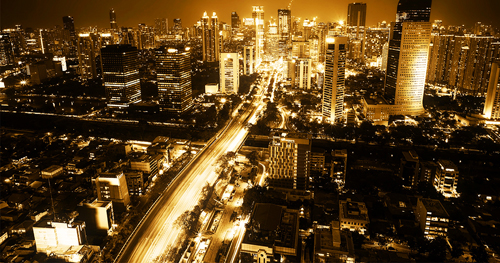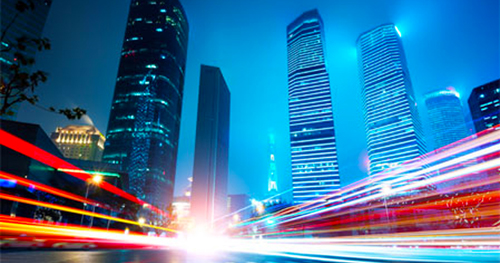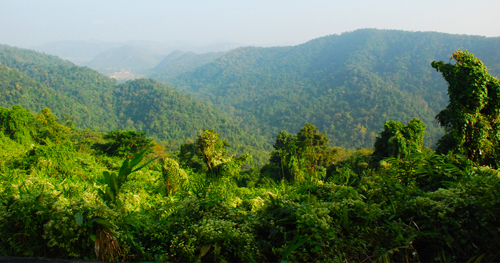Innovation Earth is a series detailing modern infrastructure projects around the world which take into account environmental and labor concerns. The series beings with a look at the Meikarta project in Indonesia.

PIXABAY
An overhead view of Jakarta, Indonesia.
Indonesian Landscape
Indonesia is the fourth most populous nation on Earth only trailing China, India, and the United States. The country also ranks in the top twenty in both nominal and Purchasing Power Parity (PPP) Gross Domestic Product (GDP) rankings. Economists see the country as a newly industrialized and emerging economy. With these advances, the country could be on the verge of becoming a thriving economy as workers throughout the country have been receiving increases in their minimum wage throughout the past decade.
In recent years the Ministry of Environment and Forestry on Indonesia has partnered with the Environmental Protection Agency (EPA) within the United States, to work on reducing methane emissions, the cleaning of contaminated sites, and to support environmental planning. Indonesia also works with the United Nations in attempt to preserve the environment (reducing deforestation), including the plentiful jungles and biodiversity of the nation.
Recently Indonesia signed a bilateral relationship agreement with Denmark focused on long-term energy resolutions, hoping to develop renewable energy and efficient conservation methods.
The Meikarta Project

Meikarta concept picture.
The Meikarta infrastructure project was approved early in 2017 and is a part of a $353 billion budget aimed at developing the infrastructure of the emerging nation. Indonesian President Joko Widodo has promised the development will help modernize eastern Indonesia - even though the Meikarta project is near the urban city of Jakarta. Other major projects include the Jakarta-Bandung high-speed train, Patimban Deep Seaport, Kertaji International Airport, and a monorail system linking all 6 industrial estates across the country.
Meikarta is estimated to cost approximately $21 billion and will be a satellite city to the thriving Jakarta. As a satellite, it will operate as an autonomous entity with its own center. The massive undertaking is the largest infrastructure project in the country since 1967.
“We foresee that the future of the Indonesian economy is on the outskirts of Jakarta. Together with the government’s massive infrastructure development plans — which aim to connect the capital with the Greater Jakarta area — we believe our project can create jobs for at least 6 to 8 million people in the near future,” Deputy Chairman of Lippo Group - the company responsible for building the project - told reporters in May.
The first stage of construction is expected to be completed over the next three years, creating what many hope will increase the quality of life of Indonesian citizens - while also creating the opportunity to help the environment. Those living in Meikarta should be able to walk to their jobs according to Ketut Budi Wijaya, the President of Lippo.
The city is being compared to Shenzhen in China, which connects Hong Kong with mainland China and is one of the biggest manufacturing locals in China - something Indonesia hopes Meikarta can develop into.
Possible Impact Of The City

Rainforest
With the recent agreement between Denmark and Indonesia, the development of Meikarta could represent both an economic and environmental improvement in the nation. The decreased emissions and the possibility of even further investment in renewable energy, increased research and development into conservation efforts - combined with a boom of an economic boom could bring substantial change for Indonesia and Southeast Asia.
Throughout Asia, urban development is becoming a major part of infrastructure plans as nations attempt to modernize. China is currently undergoing a massive project where they intend to move upwards of 300 million people from rural areas into currently unoccupied megacities. The success of these infrastructure projects could help society slow and eventually reverse the harmful effects of climate change.
Global efforts such as the Paris Agreement combined with advances in infrastructure in developing nations can play a role in helping deal with changing weather patterns while providing higher qualities of life for working and middle-class individuals around the world.
Analysis
Meikarta and other similar projects provide a look into what the future of human civilization could look like. If we concentrate in large urban areas, it’s possible we could greatly decrease fossil fuel emissions - greatly helping the environment.
These urban hubs will also help fund research which could also directly contribute to the finding of new methods to reduce the human effect on the climate.
Along with empowering laborers by increasing their wages, providing them a better lifestyle, and reducing their daily stress - it would seem large infrastructure projects may become a large part of our existence over the next several decades.


